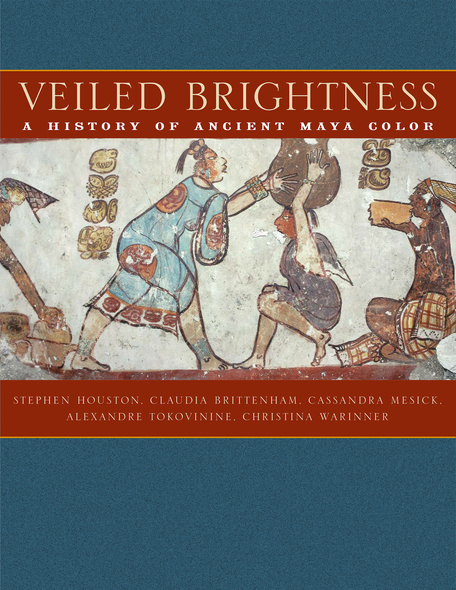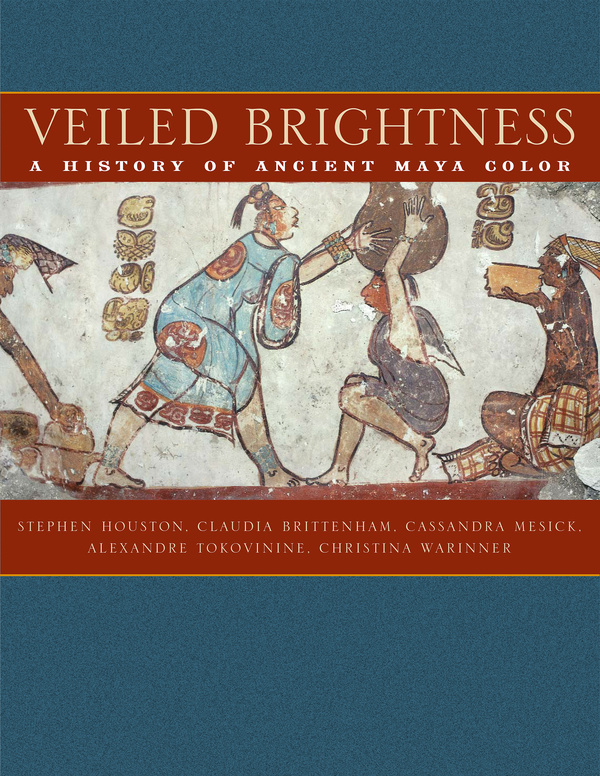Veiled Brightness
A History of Ancient Maya Color
Color is an integral part of human experience, so common as to be overlooked or treated as unimportant. Yet color is both unavoidable and varied. Each culture classifies, understands, and uses it in different and often surprising ways, posing particular challenges to those who study color from long-ago times and places far distant. Veiled Brightness reconstructs what color meant to the ancient Maya, a set of linked peoples and societies who flourished in and around the Yucatan Peninsula of Mexico and Central America. By using insights from archaeology, linguistics, art history, and conservation, the book charts over two millennia of color use in a region celebrated for its aesthetic refinement and high degree of craftsmanship.
The authors open with a survey of approaches to color perception, looking at Aristotelian color theory, recent discoveries in neurophysiology, and anthropological research on color. Maya color terminology receives new attention here, clarifying not just basic color terms, but also the extensional or associated meanings that enriched ancient Maya perception of color. The materials and technologies of Maya color production are assembled in one place as never before, providing an invaluable reference for future research.
From these investigations, the authors demonstrate that Maya use of color changed over time, through a sequence of historical and artistic developments that drove the elaboration of new pigments and coloristic effects. These findings open fresh avenues for investigation of ancient Maya aesthetics and worldview and provide a model for how to study the meaning and making of color in other ancient civilizations.
Stephen Houston serves as Paul Dupee Family Professor of Social Science at Brown University in Providence, Rhode Island.
Claudia Brittenham holds a Ph.D. in the History of Art from Yale University and is now a member of the Michigan Society of Fellows at the University of Michigan.
Cassandra Mesick is a doctoral candidate in anthropology at Brown University.
Alexandre Tokovinine is Research Associate, Corpus of Maya Hieroglyphic Inscriptions, at the Peabody Museum of Archaeology and Ethnology at Harvard University.
Christina Warinner is preparing her doctoral dissertation in anthropology at Harvard University.
- Prologue
- Chapter One. Seeing Color
- Sensing Color
- Theorizing Color in the West
- Comparative Theories of Color
- Colorizing Mesoamerica
- A Book on Maya Color
- Chapter Two. Naming Color
- Simplex Terms
- Complex Terms
- Organization of Colors
- Maya Color Terms
- Red
- White
- Black
- Yellow
- Yax
- Maya Terminology
- Chapter Three. Making Color
- Prime Colorants
- Feathers
- Flowers
- Shells
- Spondylus
- Mother-of-Pearl and Pearl
- Stones
- Jade
- Nonjade Greenstones
- Obsidian
- Turquoise
- Reflective Stones: Pyrite, Hematite, and Mica
- Translucent Stones
- Manufactured Colorants
- Dyes
- Pigments and Paints
- Blacks
- Whites
- Reds, Yellows, and Browns
- Blues and Greens
- Ceramics: A Special Case
- Making Maya Color
- Prime Colorants
- Chapter Four. Using Color
- Approaches and Limitations
- The Preclassic and Early Classic: Colors of the Earth
- Red, Black, and White
- The Late Preclassic: New Colors
- The Early Classic: Tradition and Retrenchment
- Color Use in the Preclassic and Early Classic
- The Late Early Classic and the Rise of Maya Blue
- Experiments in Ceramics
- The Invention of Maya Blue
- Architectural Color
- The Conservative Colors of Death
- Color Use in the Late Early Classic
- The Late Classic: Naturalism and Its Dissenters
- The Naturalistic Revolution
- Color and Dimension
- Rejections of Polychromy
- Color Use in the Late Classic
- The Terminal Classic: Rupture and Reinventions
- The Postclassic: The Colors of the Gods
- Early Postclassic: Five Basic Colors
- Late Postclassic: The "International Style"
- The "Blue-and-Black Style"
- Color Contrasts
- Color Use in the Postclassic
- Using Color
- Epilogue: A History of Maya Color
- Appendix: Dyes and Organic Colorants of the Maya and Aztecs
- Bibliography
- Index






